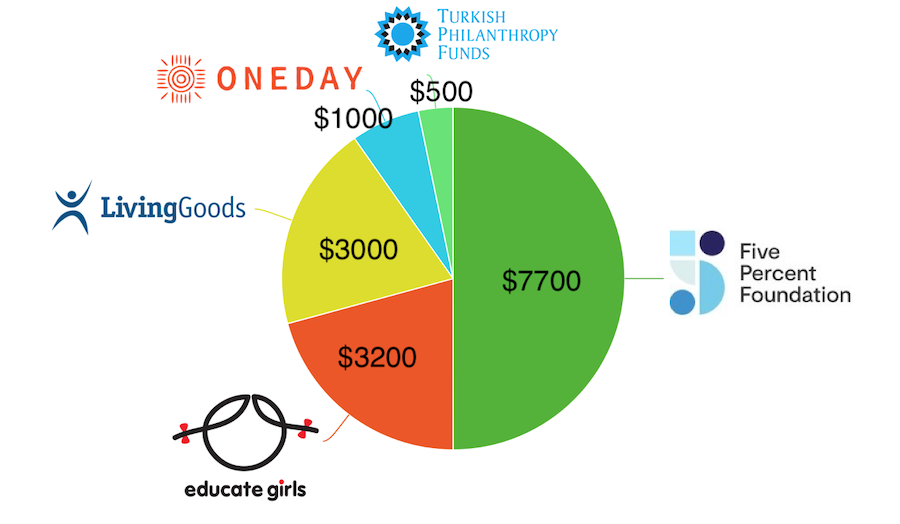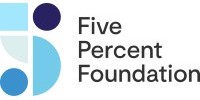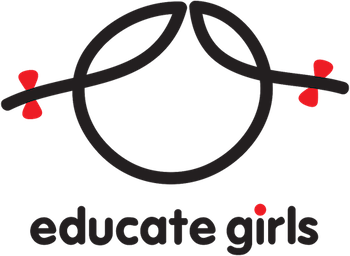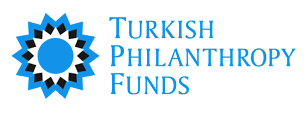2022-2023 financial year donations
As part of my promise to give 10% of my income to charity forever I gave $15,400 to charity over the 2022-2023 financial year. This constitutes 10.04% of my pre-tax income + pre-tax superannuation over the year. You can see a detailed breakdown of my income/outgoings here

1. Five Percent Foundation
donated: $7700 (June 2023)

The Five Percent Foundation was founded by a group of 13 Australian young professionals in 2018. Members of the group promise to give 5% of their income to the Five Percent Foundation every year. The money is pooled, invested in a low-risk fund, and all investment returns (minus inflation) are donated to charity, with an emphasis on those charities being effective. The recipients of donations are decided collectively. So far most donations have been to organisations recommended by The Life You Can Save or related Effective Altruism organisations. As of 21st May 2023 the pool of money contains $144,808.76 and a total of $9,310.97 has been donated to charities.
As of this year I've signed up as a member of the Five Percent Foundation. I'll be giving 5% of my income to The Five Percent Foundation from now on.
What I like:
It's a long-term plan. The aim is not to spend the money immediately but to use the money to create a trust fund from which only the investment returns are donated. As the pool grows exponentially so do the donations to effective charities.
A group of professionals from different parts of the workforce coming together to give their money to people who need it sends a powerful message - more powerful than a few people giving alone.
Giving a percentage of income to charity can be a lonely and confusing thing. I like the idea of a network of other professionals guiding and supporting each other.
The group has supported the same sorts of charities that I do.
Donations are tax deductable 💰💰💰.
I've met some of the members of the group and they're lovely people.
What I don't like:
There are benefits to giving now vs. later. Helping someone out of poverty now is generally better than helping them out of poverty 10 years from now because the benefits cascade. 10 fewer years of living in poverty means 10 more years during which a family is empowered to help themselves and their community. Doing good accrues its own sort of interest, in this way.
I am giving up some of my agency over where the money goes
2. Educate Girls
donated: $3200 (June 2023, via The Life You Can Save)

Educate Girls works in rural India where rates of education for women and girls are low and child marriage rates are high (In the Indian state of Rajasthan, 44 percent of women are literate vs. 76 percent of men, 15 percent of girls there get married before they are 10 years old, 68 percent get married before they are 18). Educate Girls has a multi-faceted strategy to improving education of girls and women, including getting unenrolled girls enrolled, running extra education programs to improve school performance, and improving school governance. They run in 20,000+ villages in Rajasthan, Madhya Pradesh and Uttar Pradesh
What I like:
It's listed by The Life You Can Save as a top charity
It has evidence from a randomised controlled trial to back up its effectiveness. Effects of a Multi-Faceted Education Program on Enrollment, Equity, Learning, and School Management: Evidence from India (2019) was a randomised controlled trial that looked specifically at the Educate Girls model. It showed positive effects on:
- enrollment: enrollment of girls increased by 8.1% (not huge 🤷) in treatment vs. control schools. Girls in treatment schools were 11.4% more likely to re-enrol the next year.
- performance: students in treatment schools performed 0.32 standard deviations higher than the control schools (again not huge 🤷).
- governance: increased number of committee meetings (15.6% percent more) and increased number of actioned plans that came out of those meeting (24.7% more, unclear if these plans are actually useful).
There are some vaguely related randomised controlled trials looking at the positive impacts of increased school attendance in underdeveloped regions. The Impact of Free Secondary Education: Experimental Evidence from Ghana (2017) is a randomised controlled trial that suggested that providing covering the cost of school for Ghanaian students increased graduation rates from 47% to 74%.
Supporting the education of women and girls intuitively seems to me like an effective way to develop communities by improving gender equity, increasing total education, serving an underserved group, and reducing rates of teen marriage and teen pregnancies.
It was founded and is run by an Indian woman and social worker, meaning that she has insights that an outsider wouldn't.
A lack of strong evidence for this charity is less concerning to me because the effects are likely to play out over a long time. You might not see benefits like increased career sucess, decreased gender disparities and increased economic growth and innovation for decades.
What I don't like:
The effects seen in the randomised controlled trial are "significant" but not by much.
GiveWell - a charity evaluator - wrote a 2019 report on education in developing countries and found a lack of evidence for the effectiveness of interventions in this space. GiveWell doesn't recommend any charities directly targeting education.
3. Living Goods
donated: $3000 (June 2023, via The Life You Can Save)

Living Goods operates in Uganda. They run a program whereby independent "community health promoters" act as door-to-door salespeople and health educators, giving basic health advice and selling cheap, effective medical supplies including: mosquito nets, malaria prophylaxis, vitamins and minerals, fortified foods, malaria treatments, oral rehydration solution, zinc, antibiotics, deworming pills, medicines for pain, coughing, and colds, reproductive health goods (delivery kits, menstrual pads, contraceptives), and hygiene goods (soap, diapers, toothpaste, toilet paper).
Community Health Promoters are allocated an area in which to do visits. They purchase the supplies from the parent organisations (Living Goods and BRAC Uganda) at below cost price (the parent organisations lose money on this) and sell for a slight profit. They were operating in 883 clusters (villages) by end of 2013, by end of 2018 they were reaching more than 7,000 villages
What I like:
It's listed by The Life You Can Save as a top charity
It used to be in GiveWell's "Standout Charities" list before they got rid of that list.
A randomised controlled trial assessing the Living Goods program - Reducing Child Mortality in the Last Mile: Experimental Evidence on Community Health Promoters in Uganda (2019) (link here) - showed impressive results:
- "in treatment villages, under 5-years child mortality was reduced by approximately 27 percent, infant (i.e., under 1-year) mortality by 33 percent, and neonatal (i.e., under 1-month) mortality by 28 percent, compared to control villages that did not receive the program"
- "Our results indicate that the average cost per averted death over the three years of study is approximately US$4,000"
Living Goods uses the undeniably powerful engine of capitalism for good. Capitalism is the worst social system except for every other social system that we've tried, so might as well use it for good.
Provides employment to local people (mostly women) on the ground. Makes use of their local knowledge and relationships to increase the uptake of medical supplies.
What I don't like:
On the surface it sounds like a multi-level marketing scheme for bednets and soap. There is an incentive for the health promoters to sell families medical supplies that they don't really need.
Potential difficult-to-measure effects of flooding the economy with low-cost medical supplies - risk of crowding out local suppliers?
According to GiveWell, in 2016 Living Goods wasn't limited by funding, meaning that my donation might not be needed right now (GiveWell haven't posted an update on this since 2016).
4. OneDay Health

donated: $1000 (June 2023)
OneDay Health was started by Dr Nick Laing, a doctor from New Zealand who works in Uganda. OneDay Health operates in rural Uganda. They identify “black holes” in healthcare coverage (remote rural areas more than 5 km from government health facilities. According to OneDay Health, "about 5 million Ugandans live in these healthcare black holes and only have bad options when they get sick"), then they go to these areas, ask people whether having a health centre is wanted and needed and, if so, set up a very basic nurse-run health centre (they load up a car with goods and set these health centres up in one day, hence the name). They are able to provide basic treatments for common diseases.
What I like:
They estimate that a health centre costs USD$3000 to set up and run for a year. They estimate it costs about USD$1.50 per patient treated. The entire organisation has spent about USD$220,000 in the past 5 years. They run 38 centres. This is an extremly cheap intervention.
Because it's so cheap and the idea intuitively seems like a great one, it seems very likely that this charity is doing excellent work for not much money
It's run by a doctor with several years of experience running health clinics in rural Uganda
It's employing local people and uses local knowledge.
This seems like a neglected cause. OneDay Health haven't received a lot of money or attention and it seems like they deserve more of both.
What I don't like:
By their own analysis, a lot of the patients they treat would have received treatment for their diseases anyway, they just would have had to travel further.
Very difficult to assess how impactful it is. Are the treatments effective? Are they treating people who otherwise wouldn't have been treated?
They're not tax deductable in Aus
5. Turkish Philanthropy Funds
donated: $500 (Feb 2023)

Turkish Philanthopy Funds ran an earthquake relief fund after the Türkiye/Syria earthquake happened on the 6th of February 2023.
What I like:
I felt personally very affected by the thought of thousands of people trapped under rubble and hundreds of thousands more who had lost loved ones, homes and businesses in the earthquake. The official death toll is 59,259 according to Wikipedia. I wanted to do something to help.
At that moment in the world there were probably not many communities more in need of help than some of the communities in Türkiye and Syria.
A post on the Effective Altruism forum by a group of Turkish citizens recommended Turkish Philanthropy Funds as a good organisation to give to. I couldn't find better information and stuck between giving nothing and giving to an uncertain cause I chose to give to the uncertain cause.
In retrospect Turkish Philanthropy Funds say in their latest impact report that 100% of donations went to grants to other NGOs working on the ground. They explain in detail where all of their grants have gone.
Looking through the impact report, a lot of the grants they delivered intuitively seem like great ideas to me: food banks, keeping children in school with cash and scholarships and accommodation, medical care for vulnerable groups, a generator for an emergency shelter, tents for another emergency shelter, and many others.
What I don't like:
Giving to disaster relief well is difficult because disaster situations unfold and change quickly and it's hard to get information on where resources are needed and whose work is effective. In a disaster there are no randomised controlled trials to tell us what relief is most helpful for the people suffering. We need to do guesswork and we're liable to get it wrong.
-
It's impossible to know exactly how helpful my $500 was because Turkish Philanthropy Funds provided grants to >50 NGOs. Who knows where exactly my $500 went.
Prevention is better than cure. Nothing prevents earthquakes but perhaps supporting measures to make the communities less susceptible to earthquakes in the future would be a more thoughtful use of money (not sure how to do this though).
-
Donations to neglected causes are particularly great and it's hard to say whether the Türkiye/Syria earthquake relief was a neglected cause. The Australian government itself gave $18M in humanitarian aid after the earthquake. Does my giving $500 just mean the Australian government had to give $500 less and therefore my donation was practically a donation to the Australian government? In theory maybe.
Other points
I donated to Educate Girls and Living Goods through The Life You Can Save (specifically by bank transfer to minimise fees). I understand that The Life You Can Save passes these donations directly to the recipient organisations. This enables my to claim the donations as tax-deductable, which they otherwise wouldn't be.
Why not just give all to one charity? I want to hedge my bets by giving to a range of charities so that I minimise the risk of having acheived nothing, which would make me feel bad.
Why not just give to the GiveWell Top charities? I have a feeling that the GiveWell top charities are fully funded at the moment. They had to roll over their funds a couple of years ago because the top charities couldn't take any more, and I suspect the large pool of money in OpenPhilanthropy will be used to cover any gaps for the forseeable future. I think they don't advertise this because they don't want people to stop giving. I'm keen on giving to charities that aren't in GiveWell's top charities.
Addendum 15/07/2023
I later realised I'd forgotten about a $500 donation to the turkish charity AHBAP, which I gave to at the same time as I gave $500 to Turkish Philanthropy Funds. AHBAP was also recommended by Turkish users on the Effective Altruism forum. The pros and cons are the same as for Turkish Philanthropy Funds: a critical situation with lots of people in great need, but a lack of information about the best ways to address those needs.